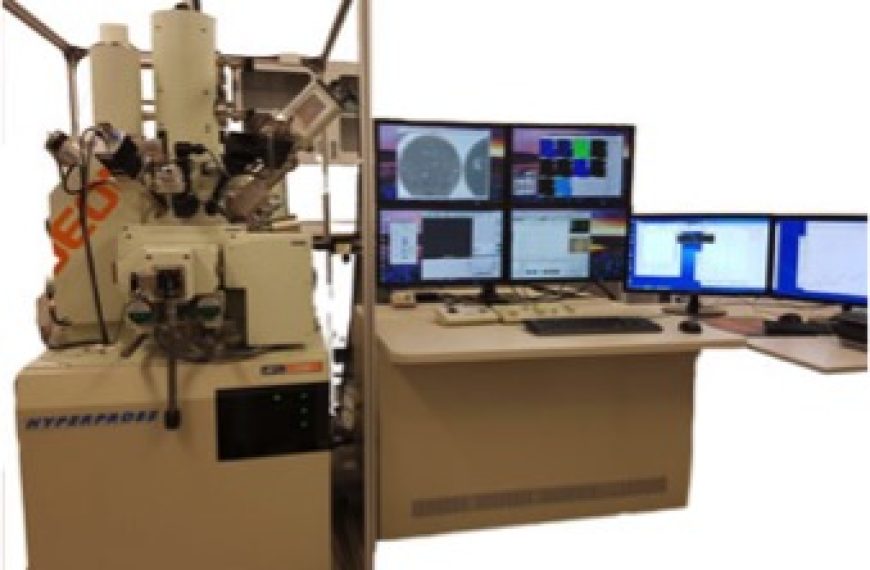Description
JEOL JXA-8530F Electron Microprobe is used for Electron Probe Microanalysis (EPMA), a non-destructive technique used to determine quantitatively the chemical composition of a sample. By firing a beam of electrons at a material, X-rays are generated that can be compared against X-rays generated from a known standard material and the composition of the elements calculated.
Uses / Applications
By moving this electron beam around a surface, changes in the intensity of characteristic X-rays generated can be used to generate an elemental map of the sample.
EPMA utilises Wavelength Dispersive Spectrometers (WDS) to distinguish between X-rays of very similar energy, giving a resolution order of magnitude higher than that of the comparable Energy Dispersive Spectroscopy (EDS).
The JEOL EPMA at the University of Manchester is equipped with the UK’s first Soft X-ray Emission Spectrometer (SXES), allowing us to probe oxidation state variations of elements down to and including Li.

Specification
Field Emission Gun electron source for high spatial resolution analysis, operating from 1kV to 30kV
Traditional secondary and backscattered electron imaging
4 Wavelength dispersive spectrometers (WDS) including LDE crystals for light elements and large area LIF and PET crystals, covering elements from Be to U down to concentrations of 10s of ppm.
SDD EDS detector that can be used alongside WDS
Soft X-ray Emission Spectrometer (SXES) capable of detecting Li and distinguishing changing in coordination environment
JEOL panchromatic cathodoluminescence detector for imaging samples that illuminate under the electron beam
Field cancellation system



